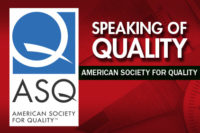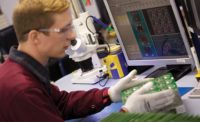Ain't Nothing Like the Real Thing is a song by Marvin Gaye and Tammi Terrell from 1968. The lyrics describe looking at a picture and reading a letter and that these things, while comforting, are no substitute for looking upon someone in real life or hearing their voice speaking the words, hence the title of the song.
The idea expressed in the song was so strong that it was not long until it was co-opted by commercialism. Coca-Cola and Burger King came up with jingles and promotions suggesting their brands were the “real thing” so why would you settle for anything else.
This, and the sentiment of the song, further begs the question, when did we start substituting for the real thing, and why?
Let’s take those two examples from the song. The search for a way to capture an image in a permanent form dates back to the early 1700s, reached a viable state in the 1830s, and has led all the way to our day where it is possible for just about anyone to take a photo of anything, anywhere. Whether by accident or on purpose, photography has allowed us to visually document what we see, either to share with others who could not see it themselves or aid in memorializing our own experiences. It has often been said that a picture is worth a thousand words.
And those thousand words, when not able to be there in person, can be delivered via a letter, like described in the song. The written word dates back further than I would care to research, but the tool I would use to do so—the internet—is today’s version of a letter, along with email and texting, all of which evolved as a way to communicate over great distances. This reminds me of a common complaint about modern life—the family sitting at a dinner table, all on their phones or tablets, instead of conversing with their loved ones sitting right across from them.
Last comment aside, both of these examples are of technology and progress designed not to substitute, but to make a semblance of something possible when the “real” is just not in the cards.
Oh, and then there’s Amazon.
However, there have been things purists would say there is simply no substitute for—hands-on learning. I’ve had a number of teachers who professed that you can't learn how to rebuild a carburetor until you rebuild a carburetor, or learn to paint or draw without painting or drawing.
There are other instances, common occurrences really, that—at least until recently—also were deemed crazy to not experience “for real.” Rarely if ever, would an individual or family consider buying a house without seeing it, without being able to reach out and feel the walls and test all the fixtures, or see if there is water damage in the basement and so on. It was virtually unheard of to buy a car without giving it a test drive or buy a new pair of pants without trying them on first. It may be difficult for a someone to immediately understand the nuances of a new job, which is why many businesses, police departments and communities still offer a “ride-along” to employees-in-training or citizens—an opportunity to experience first-hand a day in the life of a new job or that of a peace officer.
Technology, however, may be allowing many of these “would never” scenarios to fall to the wayside. Cars can now be purchased totally online and dropped off at your home with seven days to decide if you want to keep it. Virtual-reality tours of homes now allow potential buyers to see every inch of a home without ever stepping foot inside…Oh, and then there’s Amazon.
The quality industry is no different. Managing Editor Michelle Bangert writes, “Consider the quality engineer at an appliance manufacturer who used to go on ride-alongs with the repair technician in order to learn how their product was performing. Today, the product itself can provide feedback to the manufacturer—with no in-person visit required.”
So, check out Michelle’s article, “The Future of Quality,” and everything else we have to offer in this month’s Quality.
Enjoy and thanks for reading!




